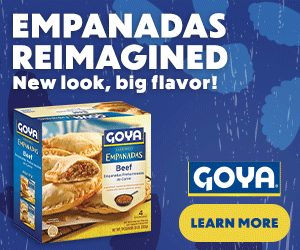Author’s note: After a hiatus following brain surgery due to the discovery of a brain aneurysm, I have returned to my writing responsibilities with The Shelby Report and am now better than new. It’s great to be back!
by Cindy Sorensen/ owner and CEO of The Grocery Group
Today’s milk case is exploding with an abundance of new products. Some are cow’s milk, and some are plant-based beverages made with a variety of nuts or plants. The growth of new item introductions is fueled by manufacturers and processors responding to consumer research. This consumer data indicates shoppers are looking for innovation in the category.
The research also has indicated that shoppers want:
• transparency in the production process;
• to know the animals were well cared for in the production of the product; and
• to know the land and natural resources were cared for in a sustainable way in the production of the food.
They also are looking to know more about the people who grew the ingredients, who cared for the animals and who manufactured the product.
Innovation can be defined as new ways of processing, packaging, promoting and pricing a product. Many manufacturers in the milk case are introducing products that are innovative in their ingredients, such as added calcium, added protein, added Omega-3s and/or plant-based ingredients that fulfill consumers’ requests for additional health benefits.
New processing in the category is adding shelf life—another attribute for which consumers have asked. Marketing claims are becoming more prevalent as well, with some manufacturers communicating the latest in “absence claims” such as “gluten-free” “dairy-free,” “GMO-free” and “hormone free.”
Where we haven’t seen innovation is in the pricing of these new value-added, consumer-demanded products.
Grocery retailers are requesting promotional plans based on the traditional plans of the past. These plans request the lowest cost of goods and a 10-15 percent trade allowance, as well as feature and display payments. The problem with this traditional promotional plan is that it will ultimately result in the commoditization of new value-added products to the category. These value-added products fulfill consumers’ demands and have high price-point attributes for which the consumer expects to pay a premium.
Syndicated data studies by both IRI and Nielsen have shown that niche items with high price points will not respond with a corresponding increase in sales for the trade dollars needed to spend to fund a low price point. To reduce an item with an SRP of $5.99 by 10 percent to a price point of $5.39 does not increase sales to offset the trade funds necessary to reach that price point. The consumer for this item would purchase it without the price point reduction. Manufacturers and retailers are “leaving money on the table” to try to increase sales in this manner.
The past has shown that when increased purchases do not result after the price is reduced 10-15 percent, then the retailer goes lower and lower, squeezing the manufacturer for the lowest COGs—and very quickly the item becomes a commodity and will only sell when it is on sale.
Consumers have shown us with their wallets that they are willing to pay a premium price point for a value-added item that delivers a real or perceived value to them.
Unfortunately, there are too many examples of retailers forcing the hand of a manufacturer to reduce a price point of a new item to create awareness, trial and repeat. I would suggest a new item to the category might be better served through a sampling program, which is the most successful tactic to provide awareness to a new product. It also provides shoppers an opportunity to try a new product without investing in it. Sampling programs drive incremental sales, and products do not need a reduced price point to incent a sale during this time.
Let’s not make “commoditization” a tactic looking for a strategy.
Cindy Sorensen is the founder and CEO of The Grocery Group, which focuses on developing leadership in the grocery industry. The Grocery Group’s expertise is in developing innovation in merchandising, category management, distribution and promotion strategy, and digital and website development. The Group is also working with the industry and colleges and universities to attract, recruit and retain a talented workforce in a competitive employment market. Working with manufacturers and food startups, to develop products to fulfill changing consumer demands, also is of special interest to The Grocery Group. Reach Cindy at [email protected].


